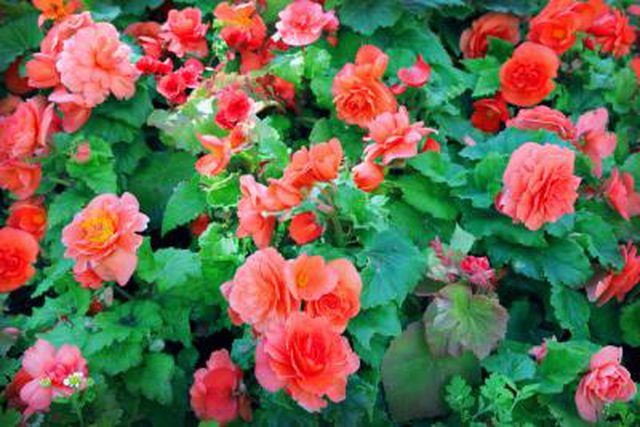Bulbs
Flower Basics
Flower Beds & Specialty Gardens
Flower Garden
Garden Furniture
Garden Gnomes
Garden Seeds
Garden Sheds
Garden Statues
Garden Tools & Supplies
Gardening Basics
Green & Organic
Groundcovers & Vines
Growing Annuals
Growing Basil
Growing Beans
Growing Berries
Growing Blueberries
Growing Cactus
Growing Corn
Growing Cotton
Growing Edibles
Growing Flowers
Growing Garlic
Growing Grapes
Growing Grass
Growing Herbs
Growing Jasmine
Growing Mint
Growing Mushrooms
Orchids
Growing Peanuts
Growing Perennials
Growing Plants
Growing Rosemary
Growing Roses
Growing Strawberries
Growing Sunflowers
Growing Thyme
Growing Tomatoes
Growing Tulips
Growing Vegetables
Herb Basics
Herb Garden
Indoor Growing
Landscaping Basics
Landscaping Patios
Landscaping Plants
Landscaping Shrubs
Landscaping Trees
Landscaping Walks & Pathways
Lawn Basics
Lawn Maintenance
Lawn Mowers
Lawn Ornaments
Lawn Planting
Lawn Tools
Outdoor Growing
Overall Landscape Planning
Pests, Weeds & Problems
Plant Basics
Rock Garden
Rose Garden
Shrubs
Soil
Specialty Gardens
Trees
Vegetable Garden
Yard Maintenance
How to Grow Angel Wing Begonias
How to Grow Angel Wing Begonias. Named for the characteristic shape of their leaves, angel wing begonias (Begonia coccinea) are fibrous, cane-type begonias grown for their handsome foliage and showy, coral pink flowers. They take relatively little effort to grow and will perform equally well in pots or in the garden, depending on the climate. Angel...

Named for the characteristic shape of their leaves, angel wing begonias (Begonia coccinea) are fibrous, cane-type begonias grown for their handsome foliage and showy, coral pink flowers. They take relatively little effort to grow and will perform equally well in pots or in the garden, depending on the climate. Angel wing begonias are also somewhat short-lived, declining after just five or six years even if grown under ideal conditions.
Climate Concerns
Angel wing begonias don't do well in the cold and will only grow outdoors within U.S. Department of Agriculture plant hardiness zones 10a through 11a. They perform best indoors where temperatures can be easily maintained between 70 and 75 degrees Fahrenheit during the day and above 60 F at night. In warmer areas, they can be grown outdoors year-round if planted in a wind-sheltered location with humidity above 50 percent. In cooler climates, it's best to grow them indoors year-round or in pots for overwintering indoors.
Growing Conditions
Angel wing begonias like similar conditions to other begonias. Warmth, moderate humidity and bright, indirect sunlight are all important, as is good air circulation. Position indoor angel wing begonias within 3 feet of a lightly shaded east- or west-facing window. Outdoor begonias need light midday shade, shelter from strong winds and loamy or sandy, fast-draining soil, as well as 24 to 36 inches of space. Indoor angel wing begonias benefit from being moved outdoors during the summer, but they must be positioned in a sheltered and shaded spot to prevent leaf scorch.
Fertilizer Needs
Angel wing begonias need a moderate amount of fertilizer when grown in warm, bright conditions. Use a balanced fertilizer with an N-P-K analysis of 15-15-15 or 20-20-20, or a blooming fertilizer such as 7-9-5. Dissolve 1/4 teaspoon of fertilizer in 1 gallon of water. Water the angel wing begonia weekly with the fertilizer solution from spring until late summer. Reduce feeding by one-half if the plant develops leggy growth, unusually thin canes or an abundance of leafy growth with no flowers. Don't fertilize in fall and winter to allow the plant to rest.
Watering Requirements
Adequate soil moisture is key to successfully growing angel wing begonias. Both pot-grown and garden-grown plants need regular watering during the active growing season, especially during hot or dry weather. Water until the excess moisture trickles from the drainage holes at the base of the pot or until the garden soil feels moist in the top 6 to 12 inches. Overwatering increases the risk of root problems and disease in angel wing begonias, so always check the soil before watering and water only when it feels dry on the surface. Reduce watering in fall to allow the plant to rest.